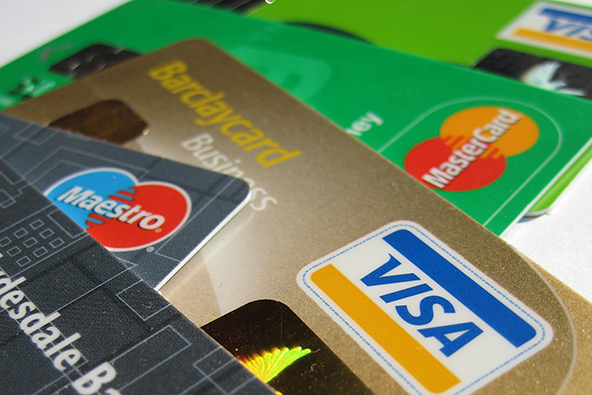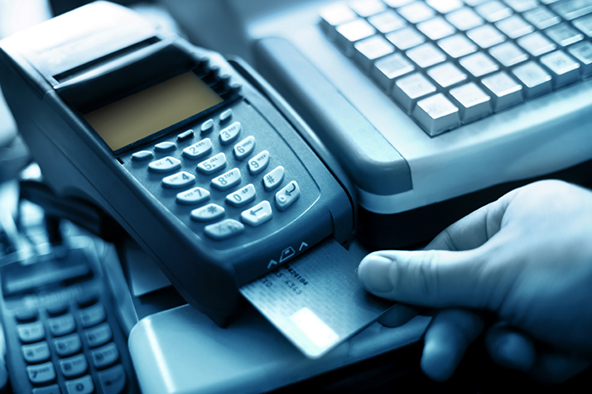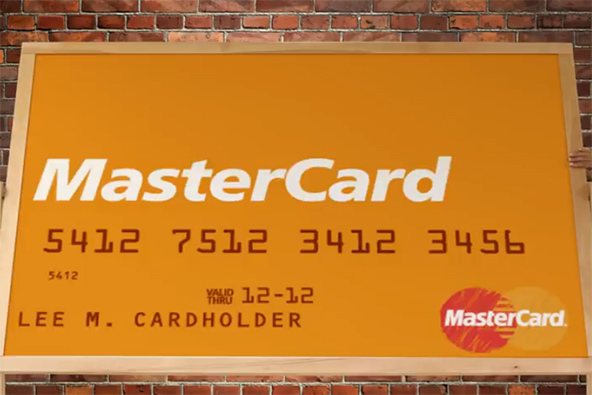U.S. Credit Card Defaults, Delinquencies Fall to New Lows

The rate at which American consumers default on their credit card payments kept falling throughout the first quarter of this year, in line with expectations, according to the latest data (registration required) released by Fitch Ratings. The headline delinquency rate also fell in the first three months of the year, according to the agency. Five of the six largest U.S. issuers posted lower delinquency rates in March, with the sole exception being Discover, whose late-payments rate remained unchanged at a very low 1.8 percent.
The monthly payment rate (MPR) on credit cards rose again during the period and at the end of March stood at the highest level ever measured since Fitch began tracking it. It is truly remarkable to see that, four and a half years after the financial crisis broke out, Americans are not just maintaining their credit card debt repayment discipline, but are further improving on it. Let’s take a closer look at the latest data.
Credit Card Charge-offs down to 3.91%
Credit card charge-offs fell during the first three months of this year, ending the quarter at 3.91 percent, Fitch tells us. The average for the trimester was 3.99 percent — 24 percent below the average of 5.25 percent recorded at the end of the first quarter of last year and 66 percent below the peak reached in 2009. However, Fitch expects that the fall in charge-offs will end in the “near term” and then trend higher later this year.
The charge-off (default) rate is calculated as the ratio of all individual credit card accounts with overdue balances that a card issuer no longer expect to be repaid by its cardholders, in relation to the total number of active accounts in that lender’s portfolio. Charge-offs occur either through contractual delinquencies or through a bankruptcy of the cardholder. Charged-off accounts are written off of the lender’s books as losses, usually at 180 days after the last payment on the account has been posted or 60 days after a notification of the bankruptcy has been received.
Credit Card Delinquencies Fall to 1.63%
The credit card delinquency rate fell by several basis points in the quarter setting new all-time records in each of the first three months of the year in the process. The average delinquency rate for the trimester was 1.63 percent, down from 1.71 percent in the previous quarter and lower by 28 percent than the rate measured at the end of the first quarter of last year.
Fitch’s delinquency rate is calculated as a ratio of the credit card accounts on which payments are past due by 60 days or more, in relation to the total number of active accounts. Delinquencies are an important early indicator of charge-offs, a large portion of which occur further down the line through contractual delinquencies (the rest occur through bankruptcies).
Monthly Payment Rate up to 23.42%
Perhaps the best early guide to the future trajectory of both the credit card delinquency and charge-off rates is the monthly payment rate. The MPR is calculated as the ratio of the total amount of credit card debt which American cardholders are repaying at the end of each month — monthly payments applied to the principal, as well as finance charges and fees — in relation to the total outstanding balance at the beginning of the month.
During the first quarter of this year, the MPR averaged 23.42 percent, up by 1.34 percent from the average level recorded during the previous quarter. The current average is even more impressive when you consider that historically the MPR has hovered in the mid-teens, which gives you an idea of just how much higher on Americans’ financial priority list credit card debt repayment now is.
The Takeaway
Fitch’s latest data clearly tell us that the post-Lehman credit card debt deleveraging trend is still well under way. The delinquencies and charge-offs are expected to plateau sometime later this year and then climb slightly upwards, but as long as the MPR remains at current levels, Americans’ credit card accounts will be in good shape. There is nothing as of yet to suggest that the newly-developed credit card debt repayment habits will disappear anytime soon.

Additionally, the ratings agency’s data illustrate once again just how much the quality of the U.S. card issuers’ portfolios have improved since 2009 and early 2010 when delinquencies and charge-offs peaked. It will be interesting to see whether the debt repayment discipline will be maintained, and the charge-offs and delinquencies kept low, in the months ahead, as the economy (hopefully) keeps improving and unemployment falls. Alternatively, once they feel more secure about their job prospects, American consumers may simply revert to type. We shall see.


